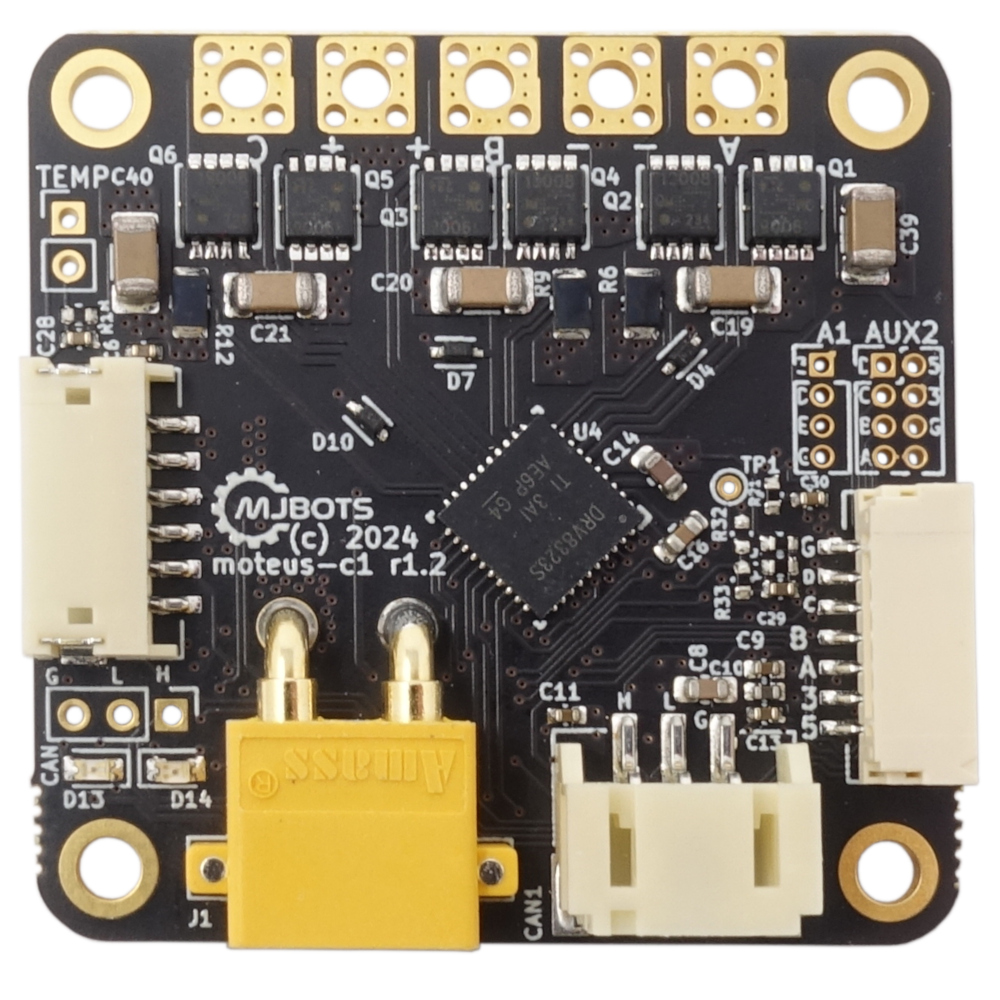Moaar power!
Exciting news! All the existing moteus controllers in the world now have an upgraded default maximum power and upgraded rated maximum power as of release 2025-03-27! Depending upon the input voltage and PWM rate, sometimes nearly twice the amount. First, check out the comparison table, then the rationale:
| Old default max / rated | New default & rated | |
|---|---|---|
| moteus-r4 | 340W / 450W | 900W <= 30V, 400W >= 38V |
| moteus-c1 | 75W / 100W | 250W <= 28V, 150W >= 41V |
| moteus-n1 | 340W / 1200W | 2kW <= 36V, 1kW >= 44V |
Background, why a power limit?
moteus brushless motor controllers drive 3 phase PMSM motors, accepting a DC input voltage, and outputting current to each of the 3 phases of the motor. It does so using MOSFET based switching, which alternately connects each phase to either ground, or the DC positive input. As that switching progresses, charge is either drawn, or replenished into, the onboard bulk capacitors.

